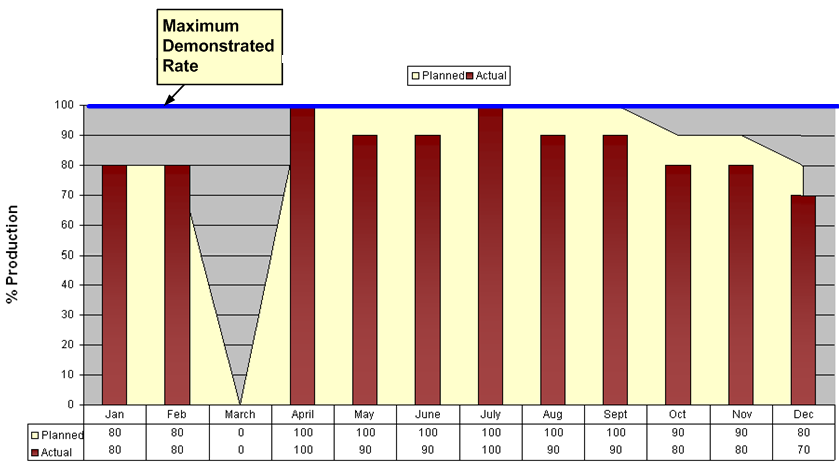Consider the following graph, which represents a company's optimal, planned, and actual production percentage for a year.

In this graph, you can see from the blue line that the maximum demonstrated rate, or the percentage of output the company can produce during optimal operating conditions, is 100%.
The yellow area displays the planned production percentage for each month. Because the managers know that they cannot produce 100% of this maximum output each month, the planned production rate is lower than 100% during some months. In March, the planned production rate is 0% because the company plans to shut down that month to perform maintenance, install new equipment, and so on.
The red bars indicate the actual production rate each month. You can see that, in some months, the company produced the amount they planned, and, in other months, they produced less than they had planned.
From this graph, managers might conclude that more than half of their lost production for the year was due to the shutdown in March. If they could find a way to reduce this shutdown time or eliminate it completely, they would see a great increase in overall production.
Based on other data entered using PLA, managers would also be able to determine exactly how much money they lost during the March shutdown and how much money they lost during other months in which they did not reach the 100% production rate. They could then categorize these losses into planned and unplanned losses.